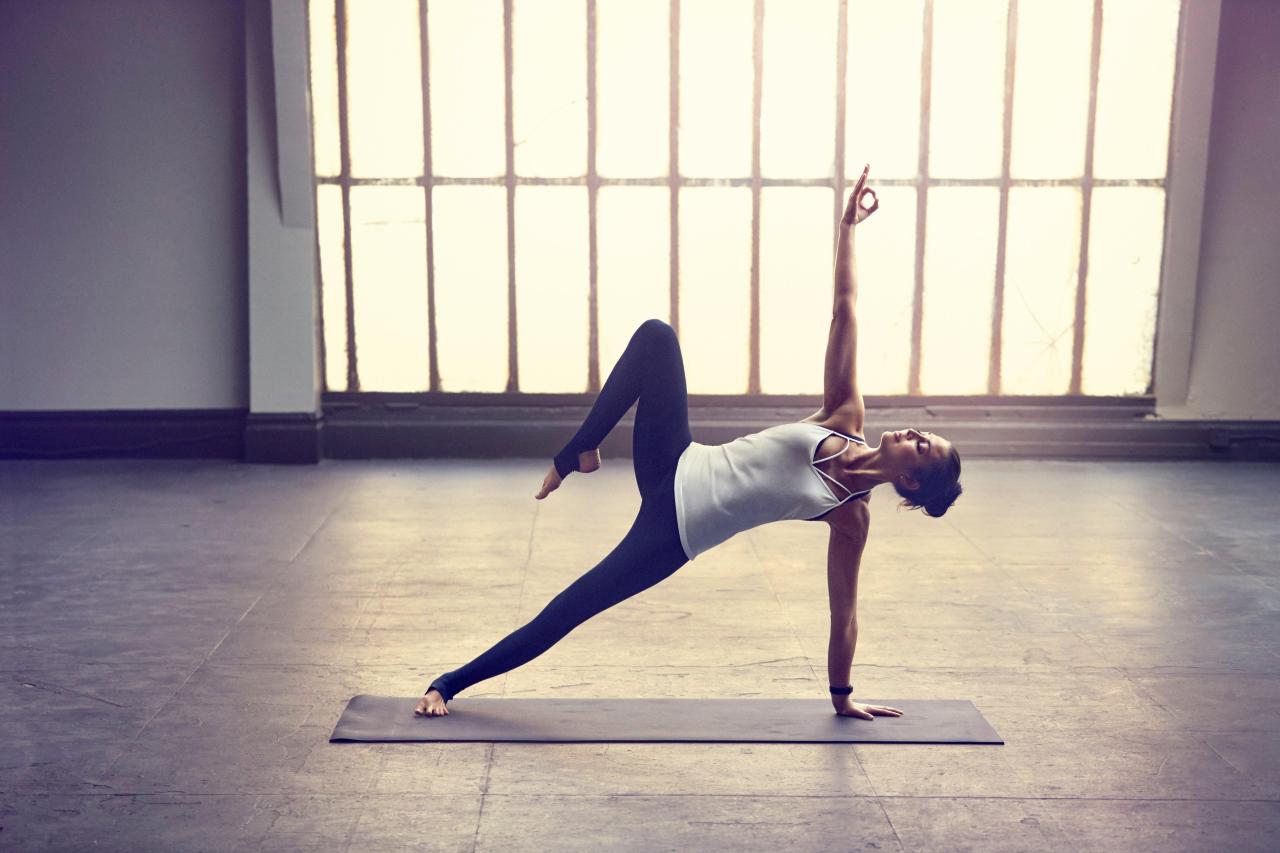Yoga for Beginners introduces the path to physical and mental wellness through a series of foundational poses and breathing techniques, offering a gateway to a healthier lifestyle. Dive into the world of yoga tailored for newcomers and discover the transformative power it holds.
Introduction to Yoga for Beginners
Yoga is a mind-body practice that combines physical postures, breathing techniques, and meditation to promote overall health and well-being. For beginners, yoga offers a gentle introduction to exercise, helping to improve flexibility, strength, and balance.
Benefits of Yoga for Beginners
- Increases flexibility and range of motion
- Builds strength in muscles and joints
- Reduces stress and anxiety levels
- Improves posture and body awareness
Why Yoga is Popular for Beginners, Yoga for Beginners
- Low-impact exercise suitable for all fitness levels
- Focuses on breath awareness and relaxation
- Can be practiced at home or in a group setting
- Offers a holistic approach to physical and mental well-being
Improving Physical and Mental Well-being with Yoga
- Enhances overall fitness without high-intensity workouts
- Promotes mindfulness and reduces negative thought patterns
- Aids in better sleep quality and relaxation
- Boosts self-confidence and self-awareness
Basic Yoga Poses for Beginners

Ready to strike a pose? Here are some simple yoga poses perfect for beginners to get started on their yoga journey.
Mountain Pose (Tadasana)
Stand tall with your feet hip-width apart, arms by your sides. Engage your core, roll your shoulders back, and lift your chest. Breathe deeply and hold for a few breaths.
Child’s Pose (Balasana)
Kneel on the floor, big toes touching, and sit back on your heels. Extend your arms in front of you and lower your forehead to the mat. Relax and breathe deeply.
Downward-Facing Dog (Adho Mukha Svanasana)
Start on your hands and knees, tuck your toes, and lift your hips up and back. Press your palms into the mat and straighten your arms and legs. Keep your head in line with your arms.
Warrior I (Virabhadrasana I)
Step one foot back, keeping both feet facing forward. Bend your front knee to a 90-degree angle and raise your arms overhead. Keep your hips squared and gaze forward. Hold for a few breaths.
Cobra Pose (Bhujangasana)
Lie on your stomach with your hands under your shoulders. Press into your palms, lift your chest off the mat, and keep your elbows close to your sides. Relax your glutes and breathe deeply.
Bridge Pose (Setu Bandhasana)
Lie on your back with your knees bent and feet hip-width apart. Press into your feet to lift your hips towards the ceiling. Interlace your fingers under your back and squeeze your glutes. Hold for a few breaths.
Breathing Techniques in Yoga

Proper breathing is a fundamental aspect of yoga practice as it helps in calming the mind, increasing focus, and promoting relaxation. By incorporating different breathing techniques, beginners can enhance their overall yoga experience.
Ujjayi Breathing
- Also known as “ocean breath,” ujjayi breathing involves constricting the back of the throat while breathing in and out through the nose.
- This technique helps to regulate the flow of breath, create a soothing sound, and warm the body from within.
- Ujjayi breathing is often used during yoga practice to stay present and centered in the moment.
Nadi Shodhana (Alternate Nostril Breathing)
- Nadi Shodhana is a balancing breathing technique that involves inhaling and exhaling through alternate nostrils.
- This practice helps to balance the left and right hemispheres of the brain, reduce stress, and improve concentration.
- Alternate nostril breathing is beneficial for beginners to calm the mind and prepare for meditation.
Deep Belly Breathing
- Deep belly breathing focuses on engaging the diaphragm to breathe deeply into the abdomen rather than shallow chest breathing.
- This technique helps in increasing oxygen flow, reducing stress, and promoting relaxation.
- Deep belly breathing is essential for beginners to connect with their breath and release tension in the body.
Setting Up a Home Practice Routine: Yoga For Beginners
Creating a yoga routine at home can be a game-changer for beginners looking to improve flexibility, strength, and overall well-being. Consistency is key to seeing progress in your practice. Here’s how you can set up a home practice routine:
Finding a Suitable Space
When setting up your home practice routine, it’s essential to find a quiet and clutter-free space where you can focus and move freely. Choose a spot with good natural light and enough room to lay down a yoga mat.
Choosing the Right Time
Pick a time of day that works best for you and your schedule. Whether it’s early morning to start your day on a peaceful note or in the evening to unwind and relax, consistency in practicing at the same time each day will help you build a routine.
Consistency is Key
Consistency is crucial in yoga practice, especially for beginners. Make a commitment to yourself to practice regularly, even if it’s just for a few minutes each day. Over time, you’ll notice improvements in your flexibility, strength, and mental clarity. Remember, progress takes time and dedication.

